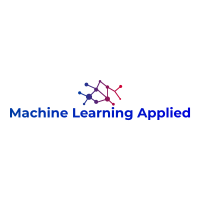Quantocracy: This is a curated mashup of quantitative trading links.
Adversarial Deep Hedging: Learning to Hedge without Price Process Modeling – Masanori Hirano, Kentaro Minami, Kentaro Imajo
Deep hedging is a deep-learning-based framework for derivative hedging in incomplete markets. The advantage of deep hedging lies in its ability to handle various realistic market conditions, such as market frictions, which are challenging to address within the traditional mathematical finance framework. Since deep hedging relies on market simulation, the underlying asset price process model is crucial. However, existing literature on deep hedging often relies on traditional mathematical finance models, e.g., Brownian motion and stochastic volatility models, and discovering effective underlying asset models for deep hedging learning has been a challenge. In this study, we propose a new framework called adversarial deep hedging, inspired by adversarial learning. In this framework, a hedger and a generator, which respectively model the underlying asset process and the underlying asset process, are trained in an adversarial manner. The proposed method enables to learn a robust hedger without explicitly modeling the underlying asset process. Through numerical experiments, we demonstrate that our proposed method achieves competitive performance to models that assume explicit underlying asset processes across various real market data.
Towards Generalizable Reinforcement Learning for Trade Execution – Chuheng Zhang, Yitong Duan, Xiaoyu Chen, Jianyu Chen, Jian Li, Li Zhao
Optimized trade execution is to sell (or buy) a given amount of assets in a given time with the lowest possible trading cost. Recently, reinforcement learning (RL) has been applied to optimized trade execution to learn smarter policies from market data. However, we find that many existing RL methods exhibit considerable overfitting which prevents them from real deployment. In this paper, we provide an extensive study on the overfitting problem in optimized trade execution. First, we model the optimized trade execution as offline RL with dynamic context (ORDC), where the context represents market variables that cannot be influenced by the trading policy and are collected in an offline manner. Under this framework, we derive the generalization bound and find that the overfitting issue is caused by large context space and limited context samples in the offline setting. Accordingly, we propose to learn compact representations for context to address the overfitting problem, either by leveraging prior knowledge or in an end-to-end manner. To evaluate our algorithms, we also implement a carefully designed simulator based on historical limit order book (LOB) data to provide a high-fidelity benchmark for different algorithms. Our experiments on the high-fidelity simulator demonstrate that our algorithms can effectively alleviate overfitting and achieve better performance.
Fast and eager K-medoids clustering: O(k) runtime improvement of the PAM, CLARA, and CLARANS algorithms – Erich Schubert, Peter J. Rousseeuw
Clustering non-Euclidean data is difficult, and one of the most used algorithms besides hierarchical clustering is the popular algorithm Partitioning Around Medoids (PAM), also simply referred to as k-medoids clustering. In Euclidean geometry the mean – as used in k-means – is a good estimator for the cluster center, but this does not exist for arbitrary dissimilarities. PAM uses the medoid instead, the object with the smallest dissimilarity to all others in the cluster. This notion of centrality can be used with any (dis-)similarity, and thus is of high relevance to many domains and applications. A key issue with PAM is its high run time cost. We propose modifications to the PAM algorithm that achieve an O(k)-fold speedup in the second (“SWAP”) phase of the algorithm, but will still find the same results as the original PAM algorithm. If we relax the choice of swaps performed (while retaining comparable quality), we can further accelerate the algorithm by eagerly performing additional swaps in each iteration. With the substantially faster SWAP, we can now explore faster initialization strategies, because (i) the classic (“BUILD”) initialization now becomes the bottleneck, and (ii) our swap is fast enough to compensate for worse starting conditions. We also show how the CLARA and CLARANS algorithms benefit from the proposed modifications. While we do not study the parallelization of our approach in this work, it can easily be combined with earlier approaches to use PAM and CLARA on big data (some of which use PAM as a subroutine, hence can immediately benefit from these improvements), where the performance with high k becomes increasingly important. In experiments on real data with k=100, 200, we observed a 458x respectively 1191x speedup compared to the original PAM SWAP algorithm, making PAM applicable to larger data sets, and in particular to higher k.
Faster k-Medoids Clustering: Improving the PAM, CLARA, and CLARANS Algorithms – Erich Schubert, Peter J. Rousseeuw
Clustering non-Euclidean data is difficult, and one of the most used algorithms besides hierarchical clustering is the popular algorithm Partitioning Around Medoids (PAM), also simply referred to as k-medoids. In Euclidean geometry the mean-as used in k-means-is a good estimator for the cluster center, but this does not hold for arbitrary dissimilarities. PAM uses the medoid instead, the object with the smallest dissimilarity to all others in the cluster. This notion of centrality can be used with any (dis-)similarity, and thus is of high relevance to many domains such as biology that require the use of Jaccard, Gower, or more complex distances.
A key issue with PAM is its high run time cost. We propose modifications to the PAM algorithm to achieve an O(k)-fold speedup in the second SWAP phase of the algorithm, but will still find the same results as the original PAM algorithm. If we slightly relax the choice of swaps performed (at comparable quality), we can further accelerate the algorithm by performing up to k swaps in each iteration. With the substantially faster SWAP, we can now also explore alternative strategies for choosing the initial medoids. We also show how the CLARA and CLARANS algorithms benefit from these modifications. It can easily be combined with earlier approaches to use PAM and CLARA on big data (some of which use PAM as a subroutine, hence can immediately benefit from these improvements), where the performance with high k becomes increasingly important.
In experiments on real data with k=100, we observed a 200-fold speedup compared to the original PAM SWAP algorithm, making PAM applicable to larger data sets as long as we can afford to compute a distance matrix, and in particular to higher k (at k=2, the new SWAP was only 1.5 times faster, as the speedup is expected to increase with k).
Improved Solution Search Performance of Constrained MOEA/D Hybridizing Directional Mating and Local Mating – Masahiro Kanazaki, Takeharu Toyoda
In this study, we propose an improvement to the direct mating method, a constraint handling approach for multi-objective evolutionary algorithms, by hybridizing it with local mating. Local mating selects another parent from the feasible solution space around the initially selected parent. The direct mating method selects the other parent along the optimal direction in the objective space after the first parent is selected, even if it is infeasible. It shows better exploration performance for constraint optimization problems with coupling NSGA-II, but requires several individuals along the optimal direction. Due to the lack of better solutions dominated by the optimal direction from the first parent, direct mating becomes difficult as the generation proceeds. To address this issue, we propose a hybrid method that uses local mating to select another parent from the neighborhood of the first selected parent, maintaining diversity around good solutions and helping the direct mating process. We evaluate the proposed method on three mathematical problems with unique Pareto fronts and two real-world applications. We use the generation histories of the averages and standard deviations of the hypervolumes as the performance evaluation criteria. Our investigation results show that the proposed method can solve constraint multi-objective problems better than existing methods while maintaining high diversity.



